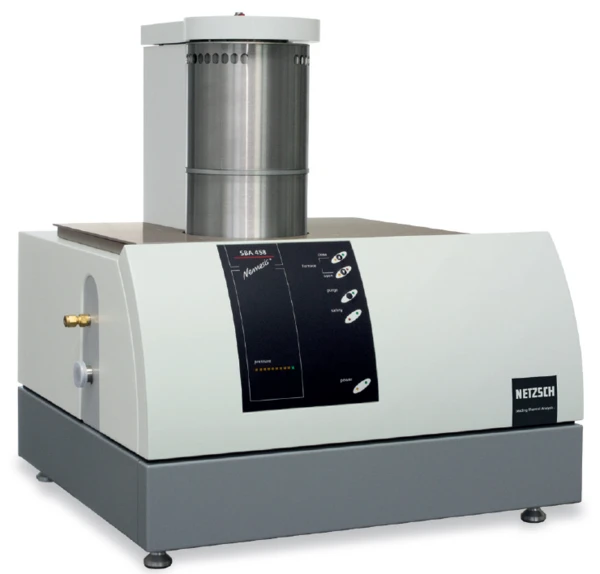Introduction
In order to enhance and optimize thermoelectric materials, it is necessary to investigate their thermophysical and thermoelectric properties. Along with the laser flash instruments, NETZSCH now also offers the Conducibilità elettrica (SBA)La conducibilità elettrica è la proprietà fisica di un materiale che esprime la capacità di trasporto della carica elettrica. L’unità di misura SI è il Siemens al metro [S/m], in onore di Werner von Siemens; in letteratura si trova rappresentato dalle lettere σ, κ, oppure γ. SBA 458 Nemesis® (figure 1) for the simultaneous measurement of Conducibilità elettrica (SBA)La conducibilità elettrica è la proprietà fisica di un materiale che esprime la capacità di trasporto della carica elettrica. L’unità di misura SI è il Siemens al metro [S/m], in onore di Werner von Siemens; in letteratura si trova rappresentato dalle lettere σ, κ, oppure γ. electrical conductivity and the Seebeck coefficient. The Conducibilità elettrica (SBA)La conducibilità elettrica è la proprietà fisica di un materiale che esprime la capacità di trasporto della carica elettrica. L’unità di misura SI è il Siemens al metro [S/m], in onore di Werner von Siemens; in letteratura si trova rappresentato dalle lettere σ, κ, oppure γ. SBA 458 Nemesis® has many special features with regard to ease-of-operation and high measurement precision.

Measurement Example
In developing high-performance thermoelectric materials, the objective should be low Conduttività TermicaThermal conductivity (λ with the unit W/(m•K)) describes the transport of energy – in the form of heat – through a body of mass as the result of a temperature gradient (see fig. 1). According to the second law of thermodynamics, heat always flows in the direction of the lower temperature.thermal conductivity and high values for the Conducibilità elettrica (SBA)La conducibilità elettrica è la proprietà fisica di un materiale che esprime la capacità di trasporto della carica elettrica. L’unità di misura SI è il Siemens al metro [S/m], in onore di Werner von Siemens; in letteratura si trova rappresentato dalle lettere σ, κ, oppure γ. electrical conductivity and the Seebeck coefficient. These properties are also advantageous when high measurement precision is required. The higher the measuring signal, the lower the edge effects. At the same time, the Conduttività TermicaThermal conductivity (λ with the unit W/(m•K)) describes the transport of energy – in the form of heat – through a body of mass as the result of a temperature gradient (see fig. 1). According to the second law of thermodynamics, heat always flows in the direction of the lower temperature.thermal conductivity of thermoelectrical materials is low, helping guarantee a homogeneous temperature distribution within the sample. However, if the sample is highly thermoconductive and exhibits only a small thermoelectrical effect, measurements are far more difficult to conduct. The smallest of asymmetries or poor thermal connection to the heaters may lead to inhomogeneous temperature profiles being formed within the sample, resulting in increased measurement uncertainties. In this respect, pure nickel is a material often used for precision tests on Seebeck instruments.
Figure 2 shows measurements on pure nickel in comparison with literature data. It is obvious that the measurement points determined by means of the SBA 458 are in very good agreement with literature data and all lie within the ±5% range. This shows that the SBA 458 is considerably better than the specification with regard to measurement uncertainty, even for materials which are difficult to measure such as nickel.

Summary
Only by means of the complex measurement setup – with two additional heaters, current pins and sheathed thermocouples fixated from below and a defined contact pressure controlled by means of springs – is it now possible to also carry out measurements on materials with a very low Seebeck coefficient and comparatively high thermal conductivity.